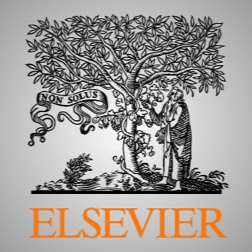افزودن باورهای اطلاعاتی به مدل تفکر راهبردی بازیگران Adding Informational Beliefs to the Players Strategic Thinking Model
- نوع فایل : کتاب
- زبان : فارسی
- ناشر : الزویر Elsevier
- چاپ و سال / کشور: 2016
توضیحات
چاپ شده در مجله فدراسیون بین المللی حسابداران – IFAC
رشته های مرتبط ریاضی، ریاضی کاربردی
مقدمه در تئوری بازی، انواع متفاوتی از مدل های تفکر بازیگران با منطق محدود وجود دارد. در این میان می توان به مدل تفکر راهبردی و تامل راهبردی و مدل بازتاب اطلاعات اشاره کرد. مدل تفکر راهبردی و تامل راهبردی را می توان برای بهبود قدرت پیش بین اصلاح کرد( واویک و کرسکون ۲۰۱۴ ب). امروزه این مدل ها به طور فعال در تئوری بازی رفتاری به عنوان ابزاری برای پیش بینی رفتار انسان توسعه می یابند. این مدل ها کاربرد زیادی در زمینه هایی نظیر بازار، معامله، مزایده، لوتاری و نیز ابزار مسائل کنترلی دارند( کارپونف ۲۰۱۲). از سوی دیگر، آن ها در سیستم های چند عاملی باری تعیین رفتار عوامل نرم افزاری پیاده سازی شده و مطابق با تصمیم گیران عمل می کنند( واندر ۲۰۱۱، سونو ۲۰۱۵). مدل بازتاب اطلاعاتی برای بازی هایی با پارامتر های خارجی استفاده می شود که کارکرد مطلوبیت بستگی به آن ها دارد. بازیگران معمولا علاقه مند به یافتن مقادیر این پارامتر ها بوده و معمولا علاقه مند به تفکر و نگرش رقیب در مورد دانش پارامتری می باشند. از دیدگاه تاریخی، مدل های بازتاب اطلاعاتی و راهبردی به طور مستقل مطالعه شده اند. در این مقالهف ما یک مدل عمومی را پیشنهاد می کنیم که امکان توصیف هر دو نوع بازتاب را به طور هم زمان می دهد.
رشته های مرتبط ریاضی، ریاضی کاربردی
مقدمه در تئوری بازی، انواع متفاوتی از مدل های تفکر بازیگران با منطق محدود وجود دارد. در این میان می توان به مدل تفکر راهبردی و تامل راهبردی و مدل بازتاب اطلاعات اشاره کرد. مدل تفکر راهبردی و تامل راهبردی را می توان برای بهبود قدرت پیش بین اصلاح کرد( واویک و کرسکون ۲۰۱۴ ب). امروزه این مدل ها به طور فعال در تئوری بازی رفتاری به عنوان ابزاری برای پیش بینی رفتار انسان توسعه می یابند. این مدل ها کاربرد زیادی در زمینه هایی نظیر بازار، معامله، مزایده، لوتاری و نیز ابزار مسائل کنترلی دارند( کارپونف ۲۰۱۲). از سوی دیگر، آن ها در سیستم های چند عاملی باری تعیین رفتار عوامل نرم افزاری پیاده سازی شده و مطابق با تصمیم گیران عمل می کنند( واندر ۲۰۱۱، سونو ۲۰۱۵). مدل بازتاب اطلاعاتی برای بازی هایی با پارامتر های خارجی استفاده می شود که کارکرد مطلوبیت بستگی به آن ها دارد. بازیگران معمولا علاقه مند به یافتن مقادیر این پارامتر ها بوده و معمولا علاقه مند به تفکر و نگرش رقیب در مورد دانش پارامتری می باشند. از دیدگاه تاریخی، مدل های بازتاب اطلاعاتی و راهبردی به طور مستقل مطالعه شده اند. در این مقالهف ما یک مدل عمومی را پیشنهاد می کنیم که امکان توصیف هر دو نوع بازتاب را به طور هم زمان می دهد.
Description
۱٫ INTRODUCTION In game theory there exist several types of thinking models of players with bounded rationality. Among them there are the strategic reflexion/strategic thinking model and the information reflection model. The basic strategic reflexion/strategic thinking model could be modified to improve its predictive power (Novikov & Chkhartishvili 2014b). Currently these models are being actively developed in behavioral game theory as a tool to predict human’s behavior. These models have many applications in such areas as markets (Wright et al. 2012), bargaining (Wright et al. 2012), auctions (Crawford & Iriberri 2007), lotteries (Östling et al. 2011), and as a tool for control problems (Novikov & Korepanov 2012). On the other hand, they are being implemented in multiagent systems to specify the behavior of software agents which act in place of human decision-makers (Wunder 2011, Sonu 2015). The information reflexion model (Novikov & Chkhartishvili 2014a) is used for games with external parameters on which players’ utility functions depend. Players are interested to find the values of these parameters and what opponents know about the parameters and what opponents think about their opponent’s knowledge of the parameters etc. Historically, models of strategic and information reflexion have been studied independently. In this paper we propose a general model which allows describe both types of reflexion simultaneously. ۴٫ CONCLUSIONS The general model combining strategic and information reflexion is presented. It turns out that such a combination does not add more complexity; it may only increase the number of nodes of the graph of a reflexive game. We expect that the ideas and results from the models of both reflexive types will extend to this new model. This may include, for example, the common knowledge of two players (which can be represented as a double arrow in the graph of a reflexive game) or unified model of all players of the same rank (such as in level-k, cognitive hierarchies, and reflexive partitions’ models). (Novikov Chkhartishvili 2014b; Wright et al. 2012). The advantage of the model is that it describes a broader class of strategic beliefs that can be modeled in one framework. We hope that this model could be used as a tool for setting up, analyzing and visualizing agents’ strategic beliefs in multiagent systems and in game theory.


